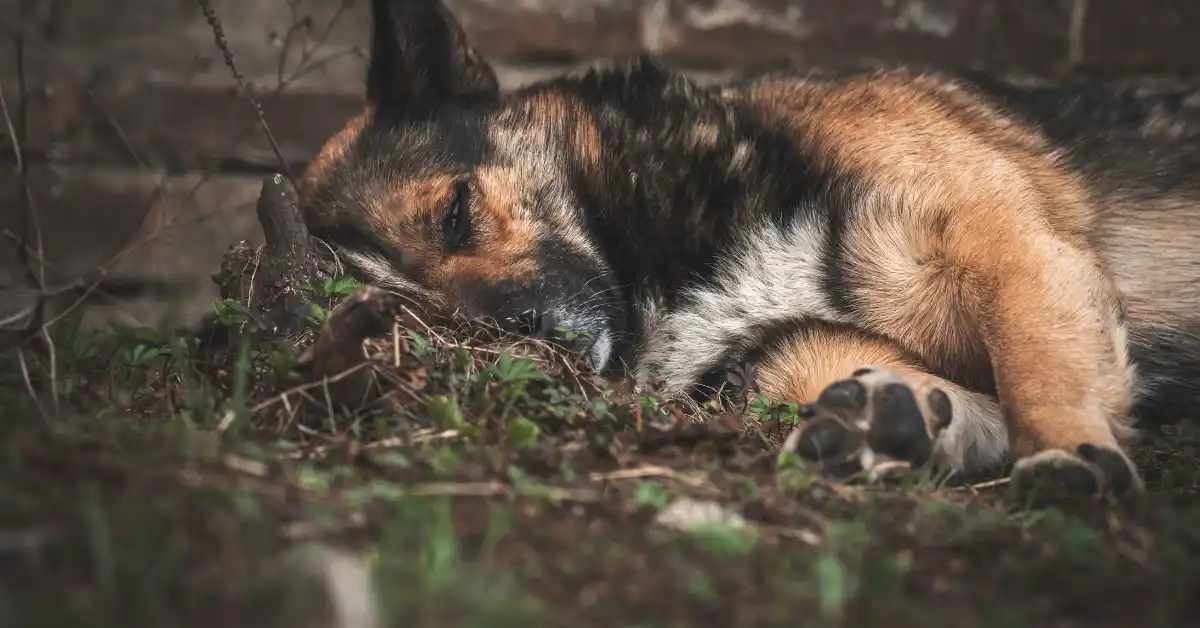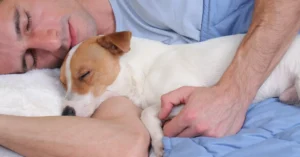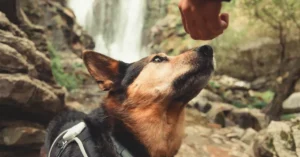10 Heartbreaking Signs Your Dog Is Near the End (And How to Say Goodbye)
Losing a furry best friend is one of the hardest things a pet owner can face. Sadly, no matter how much we wish they could stay with us forever, dogs don’t live as long as we do.
Knowing the signs that the end might be near can help you be more prepared when that moment comes. If you love your dog, this guide will help you spot 10 important signs—and understand how to say a proper goodbye.
Incontinence
As dogs age, they can start losing control of their bladder and bowels. Some might pee or poop in their sleep, while others might dribble urine as they walk without even noticing.
It can be not very pleasant for them, too. Dogs naturally don’t like making messes inside. Be gentle and never scold them—it will only make them more anxious. Some medications and extra trips outside can help for a little while. But usually, incontinence gets worse as they near the end.
Your Dog Doesn’t Want to Go Outside
You might notice your dog doesn’t want to go for walks anymore. Their legs might get weaker, and getting up could become hard.
At first, it may be subtle—maybe your pup trots instead of running after a ball. Later, they might be unable to climb stairs or jump on the couch. To help keep their food and water nearby and within easy reach. When standing becomes too hard, you’ll know they’re getting closer to the end.
Loss of Interest
As the end approaches, a dog may lose interest in their favorite things. The toys they love will gather dust, and they might not even get excited when you come home.
This happens because moving around is tiring and painful for them. They’re too worn out to do the things they used to love. It’s heartbreaking but also a regular part of the process.
Social Detachment
Some dogs cling closer to their owners when they’re near the end, looking for comfort. But honestly, most dogs do the opposite. They prefer to be alone.
You might find your dog hiding in a corner, under a bed, or in a room they never used before. It’s their instinct kicking in—animals in the wild often hide when they’re weak to protect themselves. It’s their quiet way of saying goodbye.
Odd Breathing
When the body starts to shut down, breathing changes. Your dog might breathe fast or slow or have to work hard to breathe.
Sometimes, you’ll hear heavier, louder breathing. And often, right before passing, dogs will take a deep breath. Some even make a vocal sound. It’s a difficult moment, but knowing it’s normal can help you stay calm for them.
Loss of Appetite
At the end of life, most dogs lose their appetite. Even the tastiest treats won’t get their attention.
They may also stop drinking water because their organs are starting to shut down. Vomiting bile can happen, too, if there’s nothing left in their stomachs. Just remember—loss of appetite doesn’t always mean death right away. Many illnesses and even stress can cause a dog to stop eating temporarily.
Weight Loss
If your dog stops eating, you’ll soon notice weight loss. Older dogs often lose weight even before they reach their final days.
Their bodies can’t digest food as well anymore. And if cancer is present, it steals nutrients fast, leading to even more drastic weight loss. It’s hard to see, but it clearly shows that the body is struggling.
Behavioral Changes
When dogs aren’t feeling good, they act differently. Your sweet, gentle dog might start growling or snapping without meaning to.
Pain, sickness, and confusion can make them irritable. They’re not mad at you—they’re just overwhelmed. Every dog is different, so watch for significant changes in their behavior and how quickly they happen.
Reduced Body Temperature
As dogs near death, their bodies can’t regulate temperature very well. You might notice their paws feel cold or their breath isn’t as warm.
Keeping them comfortable with soft blankets or heating pads can help. But constantly monitor them carefully—don’t let them get too hot either.
Gum Color Changes
A healthy dog’s gums are pink and spring back quickly when you press them. But if your dog’s organs are failing, you might notice changes.
Blue gums mean there’s not enough oxygen. Bright red gums could mean heat stroke. White or pale gums might signal internal bleeding. If you notice gum color changes, it’s a sign that your dog might be very close to the end.
Saying Goodbye to Your Dog
When it’s time to say farewell, every moment you spend with your dog matters. Just being there helps them feel safe.
Hold them close, speak softly, and let them know it’s okay to go. Tell them they were a good dog—the best friend you could ever ask for. Your calm, loving presence is a gift that means more to them than you can imagine.
If your dog is suffering, you may need to think about euthanasia. Talk to your vet. Some vets even offer at-home euthanasia so your dog can pass peacefully at home.
When the final moment comes, know that some dogs vocalize, twitch, or breathe deeply before finally relaxing. It’s normal. It’s just the body letting go.
After They’re Gone
After your dog passes, you’ll face one more tough choice: what to do with their body.
Many people arrange for cremation or burial through their vet. Others choose to bury their dogs at home to keep them close. Do whatever feels right for your heart.
Healing will take time. Losing a dog is like losing a family member. It’s okay to grieve. It’s okay to cry. And when the time feels right, you may find space in your heart to love a new dog who needs a family.
Your dog would want you to smile again someday.
Share this content:















Post Comment